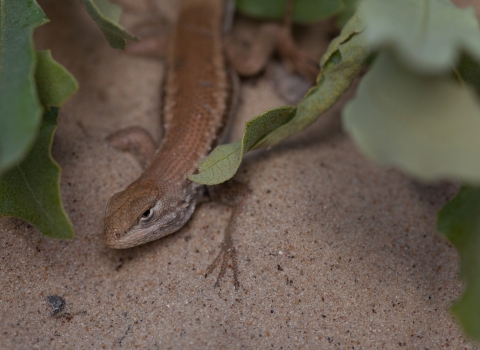GASTON, Oregon – In a changing Oregon, protected lands and waters are essential for the future of fish, wildlife, and plants. In Gaston, Wapato Lake National Wildlife Refuge was established in 2013 to ensure a future for those native, natural resources that have long defined the area. Almost 200 people gathered at Gaston Jr/Sr High School and at the refuge to celebrate new visitor opportunities.
“We are thrilled to join with the community in celebrating Oregon’s newest national wildlife refuge national wildlife refuge
A national wildlife refuge is typically a contiguous area of land and water managed by the U.S. Fish and Wildlife Service for the conservation and, where appropriate, restoration of fish, wildlife and plant resources and their habitats for the benefit of present and future generations of Americans.
Learn more about national wildlife refuge and its new visitor activities,” said Hugh Morrison, Regional Director, Pacific Region, U.S. Fish and Wildlife Service. “Wapato Lake National Wildlife Refuge is a place where all people are welcome, and where all people can experience the wonders of the natural world and share their outdoor traditions.”
In October 2022, the refuge’s public access plan was completed. The plan opened the refuge to additional activities, including wildlife observation, wildlife photography, environmental education and interpretation. The public now have access to a 2.6 mile trail on top of the levee that partially surrounds the lakebed. The refuge is open for wildlife observation and photography, environmental education and interpretation from February-November, seven days a week.
Over 800 acres, the refuge protects important habitat for wildlife and wild spaces for people to enjoy. Migratory birds use the refuge as a safe place to rest and recharge along their migratory route, including songbirds and waterfowl. Resident species such as bald eagles can be found hunting the edges of the lake and rough-skinned newts hide amongst the shallow water, mud and plants.
“The Grand Ronde Tribe is celebrating this opening as both a partner and a tribal community,” said Sara Thompson, Communications Director, Confederated Tribes of the Grand Ronde. “Returning Wapato to this landscape creates a healthier environment while providing tribal members with access to a cultural resource that once sustained us and will keep us connected to this land for generations to come.”
For generations, the Tualatin Kalapuya people relied on the abundance of resources found at Wapato Lake, which to this day remains a culturally significant landscape to their descendants who are part of the Confederated Tribes of Grande Ronde. Wapato Lake continued to provide for people during the 20th century, as the lakebed supported a vibrant onion farming economy in Gaston. That legacy is an important part of the community, and the refuge’s future. "Gaston is a small town with a big heart," said Mayor of Gaston David Meeker.
Since refuge establishment, staff and partners have been working to restore the shallow water wetlands and important habitat along adjacent waterways. Restoration work has included removing invasive species invasive species
An invasive species is any plant or animal that has spread or been introduced into a new area where they are, or could, cause harm to the environment, economy, or human, animal, or plant health. Their unwelcome presence can destroy ecosystems and cost millions of dollars.
Learn more about invasive species and planting native species in their place, and planting wapato tubers on the shoreline in partnership with The Confederated Tribes of Grand Ronde.
"Wapato Lake is an important place for indigenous people, local residents and nature lovers throughout our area and from faraway places," said Cheryl Hart, President, Friends of Tualatin River National Wildlife Refuge Complex. "The friends hope to engage with those groups and others to make Wapato Lake an even more inviting, interesting and enjoyable place for everyone."
Historically, Wapato Lake filled and receded with the rise and fall of the Tualatin River. Rich peat soils found in the lakebed supported wetland habitats that were surrounded by hardwood forests on the adjacent floodplains. As part of the National Wildlife Refuge System, refuge staff and partners have been working to restore the shallow water wetlands and the important habitat along waterways since the refuge was established. Restoration projects have included removing invasive species and planting native species in their place. Partners are critical to the success of this restoration project, contributing everything from infrastructure replacement and restoration design to funding and hands-on native planting.
"At Intel, we recognize the critical role that corporations play in preserving our natural resources and protecting the environment for future generations. We are proud to help enable the important work of our partners who are creating thriving habitats for a diverse range of bird and waterfowl species. We believe that collaboration between businesses, and communities is key to achieving positive outcomes, and we remain committed to supporting our partners to make a positive impact in Oregon,” said Fawn Bergen, Corporate Sustainability Manager, Intel.
Intel is just one of the organizations that have supported refuge restoration projects, others include the Confederated Tribes of the Grande Ronde, City of Gaston, Oregon Department of Fish and Wildlife, Oregon Hunters Association, Clean Water Services, Friends of the Refuge, Access Recreation, and many more.
“We are grateful to the many partners and organizations who have supported the refuge,” said Rebecca Gómez Chuck, Refuge Manager, Tualatin River and Wapato Lake National Wildlife Refuges. “We are committed to working with our partners like the City of Gaston, the Confederated Tribes of the Grand Ronde, the Friends of the Refuge, Clean Water Services and so many others to restore habitat and provide premier access to wildlife.”
###
The U.S. Fish and Wildlife Service works with others to conserve, protect and enhance fish, wildlife, plants and their habitats for the continuing benefit of the American people. For more information, visit https://www.fws.gov/about/region/pacific and connect with us on social media: Facebook, Instagram, Twitter, LinkedIn, Flickr, and YouTube.



